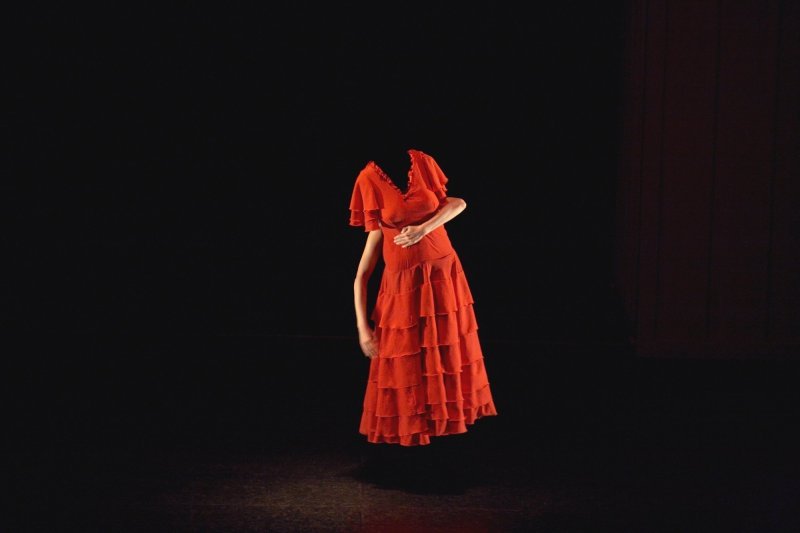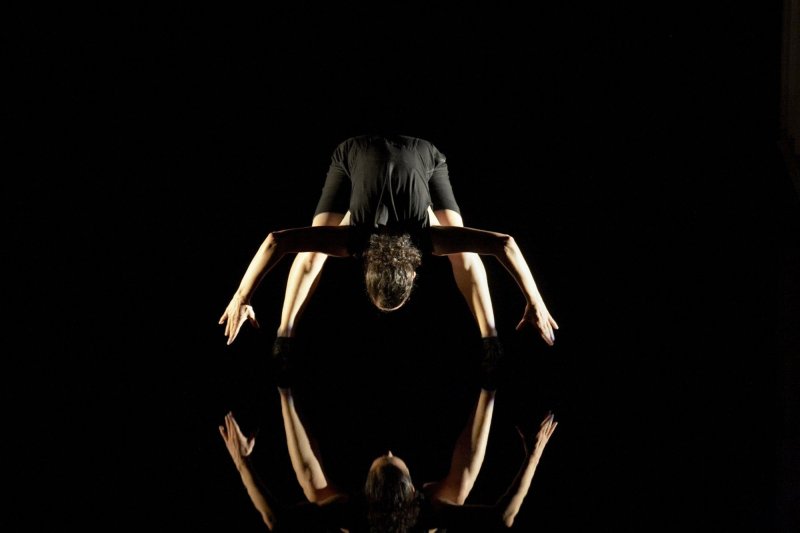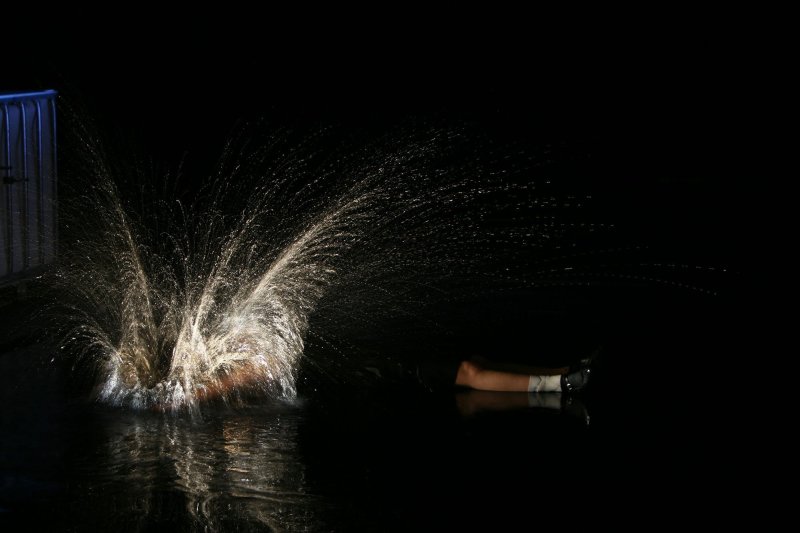
Compagnie 111 / Aurélien Bory (FR)
Questcequetudeviens?
A piece by Aurélien Bory for Stéphanie Fuster
“Qu’est-ce que tu deviens?”, like the English, “What’s become of you?”, is a question as banal as it is terrifying; It says that time has passed and that changes have occurred. It questions the choices made, and demands an on-the-spot assessment. It shows interest in the person asked, and even love, yet it can also be a sign of disinterest or disenchantment. It is a warning signal, a sting. It forces us to look at the known realm behind us, while the process of becoming propels us into the future, into the unknown.
Aurélien Bory creates a portrait of flamenco dancer Stéphanie Fuster. Dancing against a dress with a mind of its own, from within the confines of a tiny studio, and through a dark square of shallow water, Fuster’s life and art are transfigured in a piece that speaks of the relationship between the outside and the inside space, the lonely passion of flamenco, and our struggle to exist.
Aurélien Bory and his Compagnie 111, which was founded in 2000, have not failed to excite Erlangen with their exhilarating combination of theatre, circus, dance, music and architecture for ten years now. In 2013, “Plan B” featured five dancers, seemingly not affected by gravity, on a tilted wall. With “Sans Objet”, the Compagnie heaved a giant industrial machine on stage of the Markgrafentheater in 2015.
“Questcequetudeviens?” is the conclusion of a trilogy, with which Aurélien Bory portrays outstanding dancers. The first two parts “Plexus” and “Ash” were featured in the programme of the figuren.theater.festival in 2017 and 2019.
Aurélien Bory creates a portrait of flamenco dancer Stéphanie Fuster. Dancing against a dress with a mind of its own, from within the confines of a tiny studio, and through a dark square of shallow water, Fuster’s life and art are transfigured in a piece that speaks of the relationship between the outside and the inside space, the lonely passion of flamenco, and our struggle to exist.
Aurélien Bory and his Compagnie 111, which was founded in 2000, have not failed to excite Erlangen with their exhilarating combination of theatre, circus, dance, music and architecture for ten years now. In 2013, “Plan B” featured five dancers, seemingly not affected by gravity, on a tilted wall. With “Sans Objet”, the Compagnie heaved a giant industrial machine on stage of the Markgrafentheater in 2015.
“Questcequetudeviens?” is the conclusion of a trilogy, with which Aurélien Bory portrays outstanding dancers. The first two parts “Plexus” and “Ash” were featured in the programme of the figuren.theater.festival in 2017 and 2019.
Visual Theatre
Dance
Dance
Performance: Stéphanie Fuster (Dance), José Sanchez (Guitar), Alberto Garcia (Singer)
Scenography, Artistic Director: Aurélien Bory
Choreography: Stéphanie Fuster
Music: José Sanchez
Lighting Design: Arno Veyrat
Assistant Director: Sylvie Marcucci
Stage: Pierre Dequivre, Arnaud Lucas
Sound Design: Stéphane Ley
Costumes: Sylvie Marcucci
Technical Director: François Dareys
Technical Team: François Dareys, Cyril Turpin
Head of Production: Florence Meurisse
Production Team: Managers Agnès Lété, Anna Roussel
Scenography, Artistic Director: Aurélien Bory
Choreography: Stéphanie Fuster
Music: José Sanchez
Lighting Design: Arno Veyrat
Assistant Director: Sylvie Marcucci
Stage: Pierre Dequivre, Arnaud Lucas
Sound Design: Stéphane Ley
Costumes: Sylvie Marcucci
Technical Director: François Dareys
Technical Team: François Dareys, Cyril Turpin
Head of Production: Florence Meurisse
Production Team: Managers Agnès Lété, Anna Roussel
Coproduced by Festival ¡Mira! / TnBA-Bordeaux, Théâtre Vidy-Lausanne | Supported by Théâtre Garonne scène européenne – Toulouse, Scène nationale de Cavaillon, La Fabrica Flamenca – Toulouse, La Grainerie Fabrique des arts du cirque et de l’itinérance – Balma | Cie 101 supported by Ministère de la Culture – Direction Régionale des Affaires Culturelle DRAC Occitanie, Region Occitanie / Pyrénées-Méditerranée and the City of Toulouse | Supported by the Council Haute-Garonne and the Institut Français

© Aglaé Bory

© Aglaé Bory

© Mario Del Curto